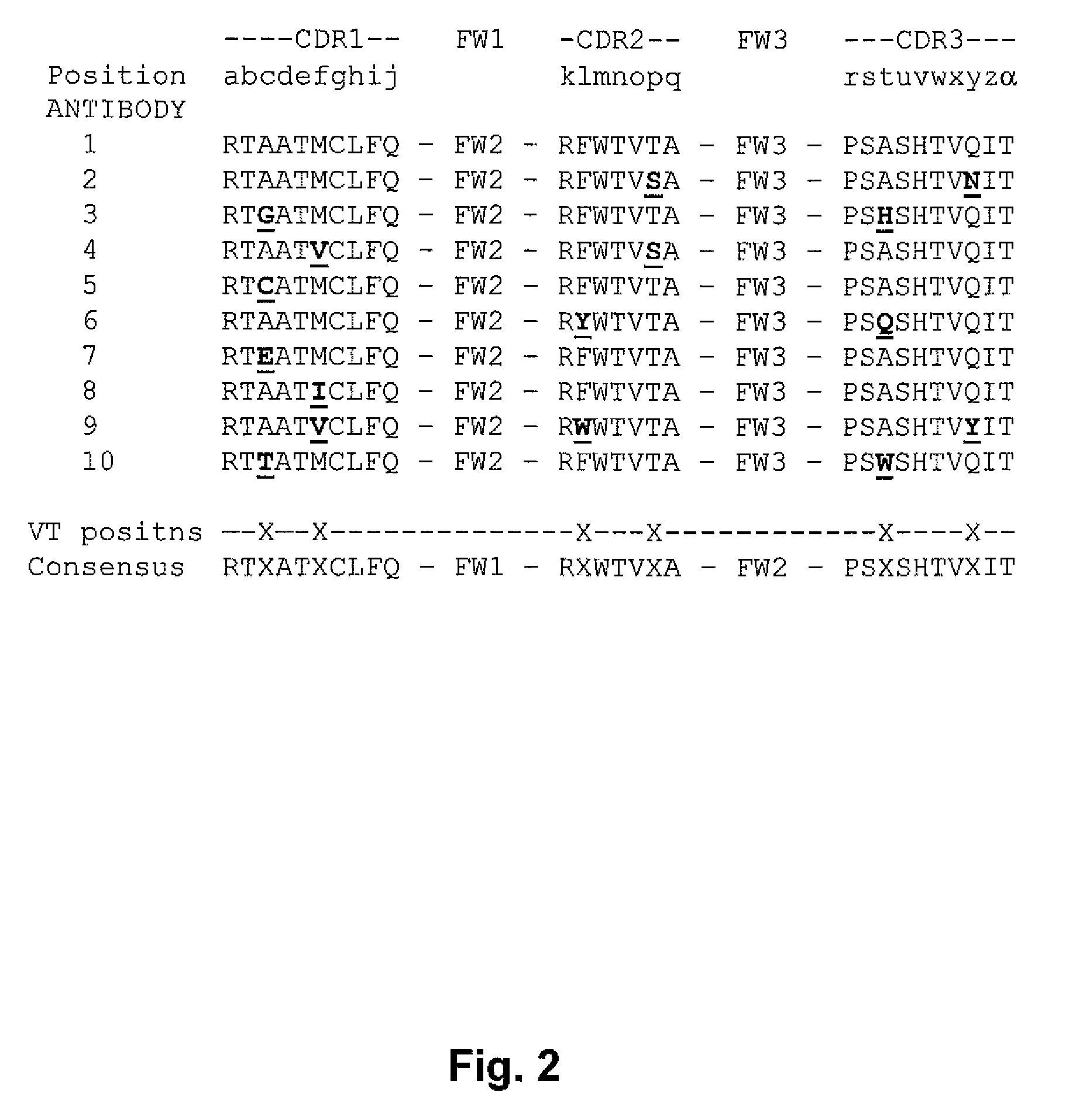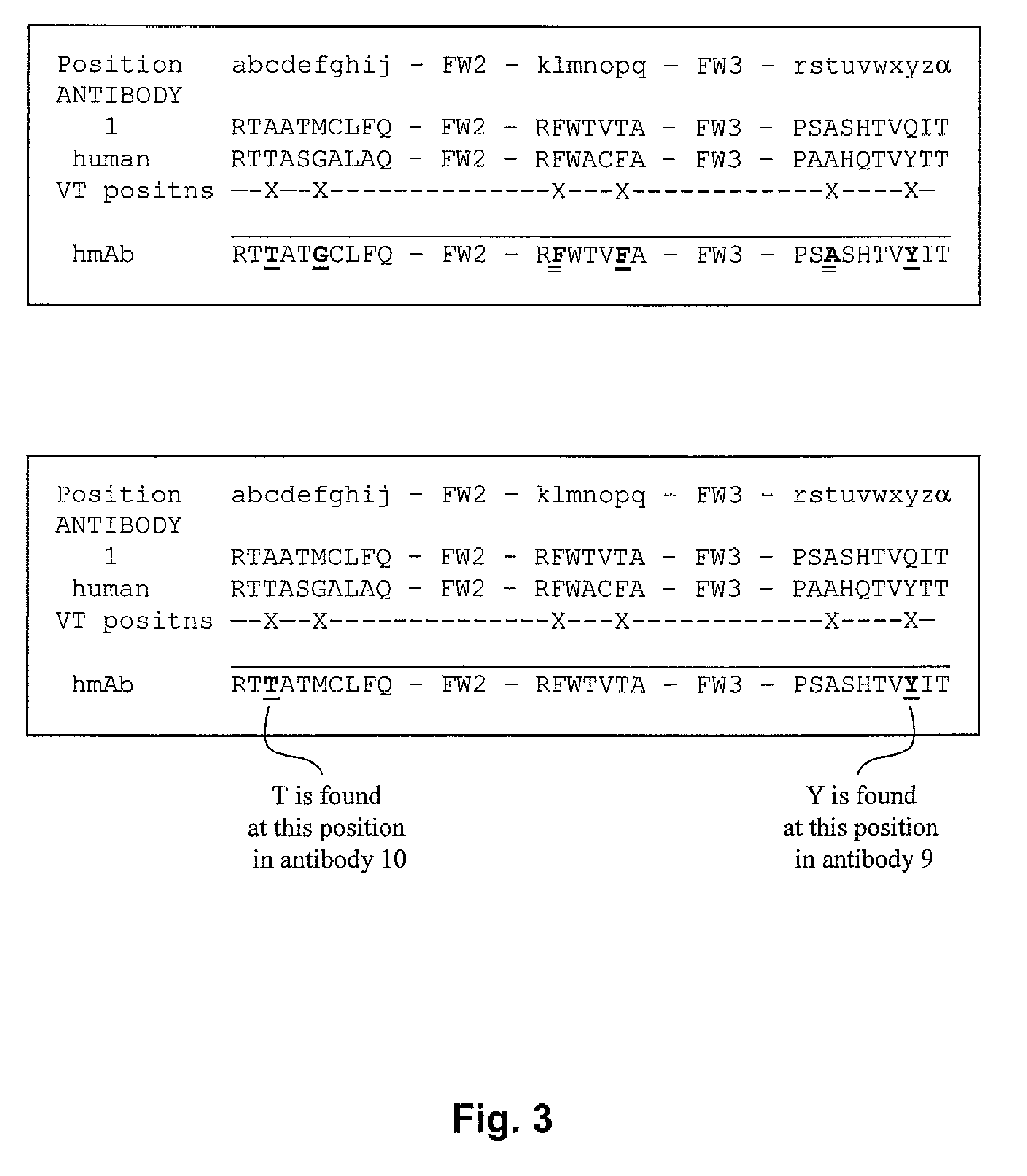Methods for antibody engineering
a technology of antibody engineering and antibody binding activity, applied in the field of antibodies, can solve the problems of not being widely used for therapeutic purposes, no suitable method for producing human monoclonal antibodies, and disappointing first attempts to fulfill potential, so as to reduce the affinity of antibodies, significantly affect the activity of antibodies, and reduce the binding activity of antibodies
- Summary
- Abstract
- Description
- Claims
- Application Information
AI Technical Summary
Benefits of technology
Problems solved by technology
Method used
Image
Examples
example 1
Identification of Variation Tolerant Amino Acids in an Anti-TNFα Rabbit Monoclonal Antibody
[0142]A rabbit was immunized with TNFα, the spleen of that rabbit was used to make hybridoma cells, and hybridoma cells expressing anti-TNFα monoclonal antibodies were isolated. cDNAs encoding the heavy and light chains of those monoclonal antibodies were isolated from the isolated cells, and sequenced. The polypeptides encoded by the cDNAs were aligned according to their structural features, and this alignment is shown in FIG. 4. FIG. 4 shows that two groups of related anti-TNFα rabbit monoclonal Abs were obtained. Antibodies 52, 63, and 115 belong to one group. Antibodies 1 and 204 belong to a different group. Positions indicated by an asterisk (*) are non-variant positions, wherein positions indicated by a period (.) or colon (:) are variant tolerant positions. Many variation tolerant positions are within the CDRs.
[0143]FIG. 2 is a multiple sequence alignment of the H3 region of ten rabbit ...
example 2
Humanizing an Anti-TNFα Rabbit Monoclonal Antibody
[0144]The sequence of a rabbit anti-TNFα rabbit monoclonal antibody A52 is aligned with the most similar human germline antibody, L20, and variation tolerant positions of the rabbit anti-TNFα rabbit monoclonal antibody are substituted with amino acids at the corresponding positions of the L20 antibody to produce a humanized rabbit antibody (HZD). The substituted amino acids are marked by stars. According to FIG. 4, position 31 (within a CDR) is a variation tolerant position because it is an N or an S. N was chosen since that is found in the human germline antibody at that position. According to FIG. 4, position 48 (just outside a CDR) is a variation tolerant position because it is an M or an I. I was chosen since that is found in the human germline antibody at that position. According to FIG. 4, position 50 (within a CDR), is a variation tolerant position because it is an L or a V. This position was substituted with an A since A is t...
PUM
 Login to View More
Login to View More Abstract
Description
Claims
Application Information
 Login to View More
Login to View More - R&D
- Intellectual Property
- Life Sciences
- Materials
- Tech Scout
- Unparalleled Data Quality
- Higher Quality Content
- 60% Fewer Hallucinations
Browse by: Latest US Patents, China's latest patents, Technical Efficacy Thesaurus, Application Domain, Technology Topic, Popular Technical Reports.
© 2025 PatSnap. All rights reserved.Legal|Privacy policy|Modern Slavery Act Transparency Statement|Sitemap|About US| Contact US: help@patsnap.com



